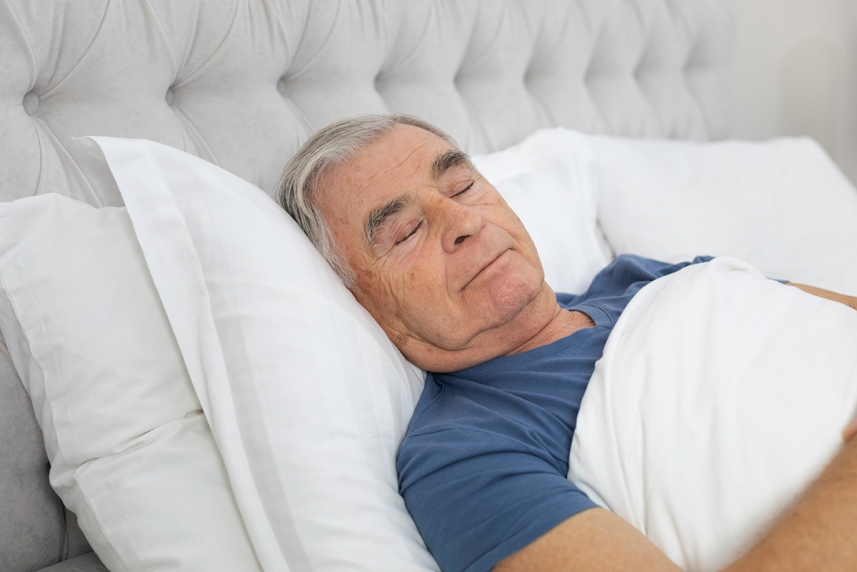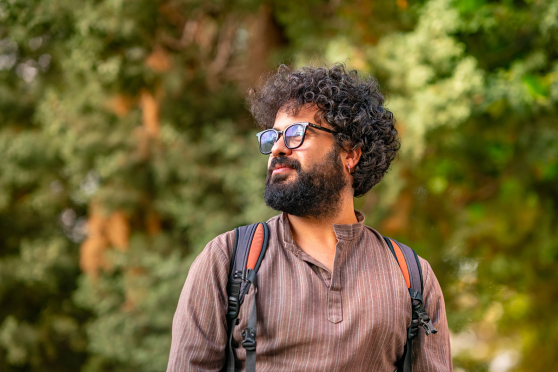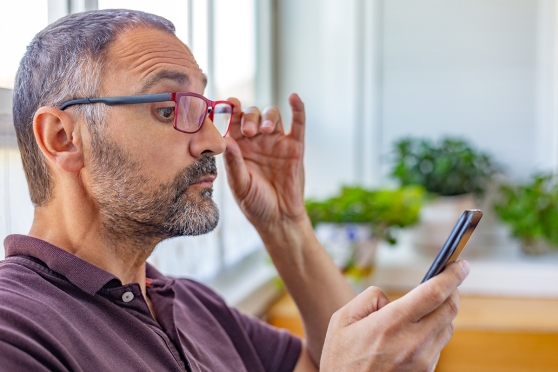How sleep position can impact a person’s vision
The way someone lies down at night could help them better manage a serious eye condition. Here’s how.

Sleep is an important part of a person’s overall health. It can affect everything from their mental and physical health to their eyes.1,2
For a person with the eye condition glaucoma, the way they sleep may play a role in managing their condition. Glaucoma is a disease that damages the eye’s optic nerve. This is often due to increased intraocular pressure, or IOP.3
In fact, IOP levels may be affected by a person’s sleep position.4 Here’s what to know.
Had your eye pressure checked recently? You can with a network provider from UnitedHealthcare Vision. Search for a provider now.
What is intraocular pressure, and how is it linked to glaucoma?
The eye produces a clear liquid called aqueous humor. It’s inside the front of the eye, and when new liquid is made, the same amount should drain out. That happens through something called the drainage angle.3
If a person's drainage angle isn't working right, fluid can build up, and their IOP can go up. That unstable eye pressure can damage the optic nerve, which is made up of millions of nerve fibers. That’s a leading cause of glaucoma.3
That damage may even lead to vision loss and in serious cases, blindness. Glaucoma is a leading cause of blindness in people 60 and older.3
How might a person’s intraocular pressure be affected by their sleep position?
Experts have long believed that lying down increases IOP more than when sitting. This could especially affect people with glaucoma.4
Experts don't know why this happens, but one idea is that it's because of changes in blood flow. Two ways a person’s IOP can be increased by their sleep position can include:
- Sleeping with the affected eye facing downward
- Turning the head into a pillow
This increased IOP could speed up damage to a person’s optic nerve, which can be a concern for glaucoma patients.4
How a person may lower their intraocular pressure
People with glaucoma can better manage their IOP and protect their vision by:
- Getting a comprehensive eye exam. If a person has glaucoma, their eye care provider will likely need to see them more often. Getting a comprehensive eye exam can be a good way to stay on top of their diagnosis. During the exam, an eye care provider may do an eye pressure test, or tonometry. It’s done with a device called a tonometer. The test flattens the cornea slightly. The amount it flattens shows how much pressure there is inside the eye.5
- Wearing protective glasses. A person may use a type of protective glasses. They sit on the orbital rim of the eye to prevent it from being pressed against their pillow when they’re sleeping. (The orbital rim is the bone that forms the base of the eye socket and extends above and to the sides of the eye.)
- Propping up the head. A person may help lower their IOP by raising their head with extra pillows when sleeping. This could slow the progression of glaucoma.
Other ways sleep and glaucoma may be linked
There are a few other ways sleep issues may be linked to glaucoma:2,6
- Sleep issues, like insomnia, can lead to an imbalance in sleep hormones. That can disrupt a person’s circadian rhythm, which can lead to fluctuations in IOP. (Circadian rhythm is the body’s internal clock.) That may lead to an increase in IOP and risk of glaucoma in people that don’t have it.
- Sleep apnea can impact a person’s vision. (Sleep apnea is when someone either stops breathing or experiences shallow breathing while they’re sleeping.) Studies show that a person with this sleep disorder may be more likely to develop glaucoma. But the exact relationship between the 2 diseases isn’t yet understood.
How can a person know if they have glaucoma?
It can be hard to tell if a person has glaucoma early on, because their symptoms may not be easy to see.3 This is why getting a comprehensive eye exam can be important to catch glaucoma in its early stages.
During the exam, an eye care provider will:
- Check the optic nerve for damage
- Inspect the eye’s drainage angle
- Measure a person’s eye pressure
- Measure the thickness of the cornea
- Take a picture or computer measurement of the optic nerve
- Test a person’s peripheral (side) vision
Having UnitedHealthcare Vision insurance is also an important step. Vision insurance may fully cover an annual eye exam. It may also cover other preventive screenings and tests for eye diseases like glaucoma.
Providers in the UnitedHealthcare Vision Network are here to help keep your vision healthy. Search for a network provider now.
Sources:
- Physical health and sleep Sleep Foundation, February 2024
- Poor sleep linked to a common cause of blindness Harvard Medical School, February 2023
- Understanding glaucoma: Symptoms, causes, diagnosis, treatment American Academy of Ophthalmology, October 2024
- Sweet dreams: The relationship between sleep and glaucoma Glaucoma Research Foundation, last reviewed January 2025
- Tonometry Cleveland Clinic, September 2024
- Sleep apnea and glaucoma American Academy of Ophthalmology, March 2024


